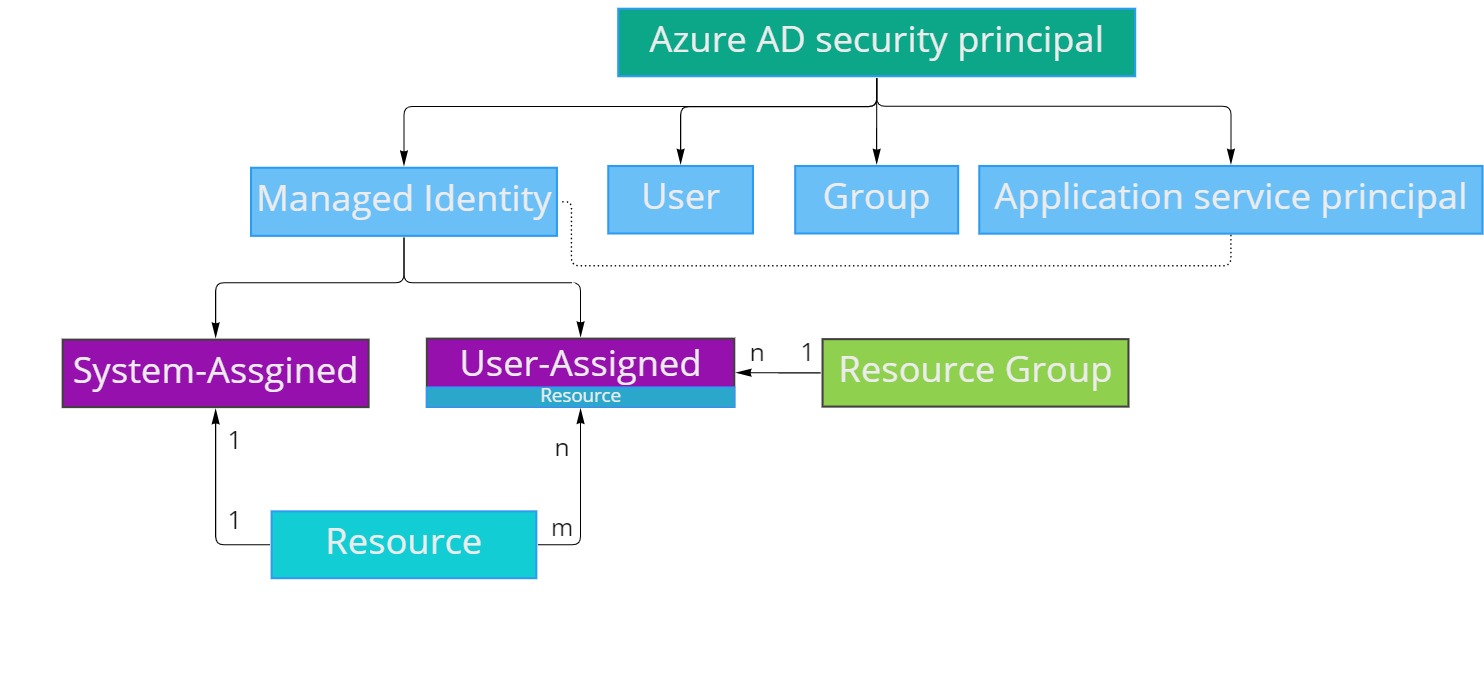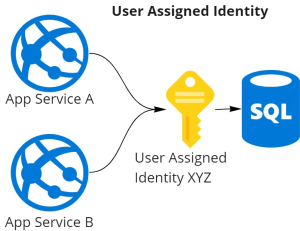Posts in this series:
- Introduction to Managed Identities
- Create a user-assigned Managed Identity
- Using Managed Identity with Azure SQL (coming soon)
- Machine to Machine authentication (coming soon)
Introduction to Managed Identities
A Managed Identity (MI), formerly known as Managed Service Identity (MSI), is a special Service Principal that is exclusively designed for Azure services. You can assign one or more identities to an Azure service and these Managed Identities can be used to access other Azure services within the Azure environment. This allows you to eliminate the need for credentials, as the Azure service can use its assigned identity to access other services.
⚠ Important With Managed Identity your are identifying a client (Azure service) not a server. Or in other words a Managed Identity is leveraging the OAuth client credential flow.

Types of Managed Identities
There are two types of Managed Identities:
System-assigned Identities

- Created when an Azure resource is created
- Deleted when the corresponding Azure resource is deleted
- Have the same name as the Azure resource
Pros
- Easy to setup
Cons
- Prone to be unstable, as you would create a new Managed Identity when you delete the corresponding Azure resource
User-assigned Identities

- Independent Azure resource with its own life cycle
- Available in the Azure Portal under Managed Identities
- Identity can be shared among multiple Azure resources
Pros
- Very stable, as the life cycle of the identity is not tied to an Azure resourc
- Can be used to share common authorization among resources, reducing the need for redundant configuration
Cons
- Requires more setup and configuration
Using the Azure Identity Library
Azure.Identity is Microsoft’s latest library, which is going to replace Microsoft.Azure.Services.AppAuthentication, to unify authentication against Azure resources. Azure.Identity is based on Azure.Core, which provides a common abstract base class called TokenCredential. A TokenCredential consists of two abstract methods.
GetTokenAsyncGetToken
Azure.Identity provides several implementations of TokenCredential.
AzureCliCredentialManagedIdentityCredentialDefaultAzureCredentialChainedTokenCredential- and many more
I typically use a combination of AzureCliCredential and ManagedIdentityCredential and combine them using ChainedTokenCredential.
var chainedTokenCredential = new ChainedTokenCredential(new ManagedIdentityCredential(), new AzureCliCredential());
ChainedTokenCredential is a composite that calls the given TokenCredentials in the order they were provided. The first success try to get a token will end the chain. ManagManagedIdentityCredential would kickin when your service runs on Azure whereas for local development AzureCliCredential would be used.
Before using AzureCliCredential ensure that you provide your Azure user credentials on the command line by typing in az login.
Making use of a TokenCredential could then look like this.
var blobServiceClient = new BlobServiceClient(new Uri(blobUri), chainedTokenCredential);
Next blog post in this series: Create a user-assigned Managed Identity